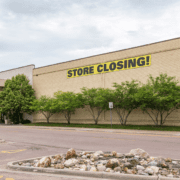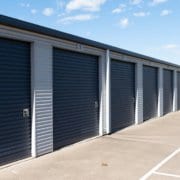Self-Storage Facilities: Why Investors Are Attracted to This Type of Property
Today, there are more than 50,000 self-storage facilities in the United States, driving $38 billion in industry revenue annually. With 1 in 11 Americans already utilizing a storage unit for excess belongings, this industry is expected to continue its rapid expansion. According to the Marcus and Millichap’s Second Half 2018 Self-Storage Report, the average price per square foot of storage units improved across all regions within the U.S., increasing as much as 9.6% to $80 per square foot in the Midwest region.
Despite a rise in tenant cost, the self-storage market, along with its capitalization rates, has been in a constant state of growth. Further, the self-storage sector is considered to be one of the most stable forms of commercial real estate investments. The sector’s reputation for providing relatively high yields and lower declines and default ratios compared to other asset classes has driven increased investor interest within the last decade, particularly for those seeking to diversify their portfolios.
Read ahead for a deeper dive into why investors are increasingly attracted to self-storage facilities.
Recession Resistance
The self-storage sector has proven that it is able to remain strong, even in the midst of a recession. During the 2008 recession, it was the only real estate sector that maintained positive growth. While the NAREIT All Equity Index lost almost 40%, self-storage REITs had a return of 5%, including dividends.
Self-storage properties are able to remain stable even during an economic downturn because the demand for extra space is largely based on life events, such as marriage, divorce, home renovations, or relocations. Additionally, storage facilities tend to have “sticky tenants”, meaning that tenants are unlikely to relocate their belongings even if rent is less expensive elsewhere, largely due to the amount of time and effort required.
High Occupancy Rates
Storage facilities’ occupancy rates have consistently hovered around 90% over the last couple of years. With the supply and demand being nearly equal, occupancy rates are predicted to remain relatively high. Even as new supply enters the market, occupancy rates are typically unaffected since 2/3 of renters choose facilities within two or three miles of home. This preference means that self-storage properties should not be impacted by competition more than three to five miles away.
An increase in the desirability of urban living also contributes to facilities’ high occupancy rates. The smaller apartment units in urban areas have created an increased need for additional storage, leading renters to lease these spaces for an average of 15 to 18 months, up from the average of 12 months years ago. Millennials have a significant preference for urban living and demand flexibility for picking up and moving across the state or even the country. Self-storage units allow them to move sporadically without the hassle of lugging extra, unneeded belongings.
As Baby Boomers downsize their households, occupancy rates will continue trending upward. Baby Boomers are retiring and leaving the workforce at record rates, with 10,000 members of this generation turning 65 every day. As their housing footprint shrinks, they are seeking to downsize without getting rid of all of their valuables. Because of storage facilities, they are able to move into smaller homes without sacrificing their precious belongings.
High Capitalization Rates
Investors prefer high capitalization rates because they are an indication that the property’s value is lower than its actual income. As the property value increases, the cap rate’s return on investment decreases. Therefore, investors often use these cap rates to compare alternative investment options, such as stocks, bonds, businesses, and other non-self-storage real estate. Cap rates are also helpful in determining what an investor should be paying for the property.
Capitalization rates for individual facilities vary based on factors including the size, age, and market characteristics of the facility. However, cap rates for the entire self-storage sector averaged 8.5 to 9% in 2018, up from the average of 6.5% to 8% reported in 2014. And the higher the cap rate on the acquisition of a property, the better it is for the investor.
Outlook for Future Investments
Nationwide, self-storages are performing well and are expected to see a 2%-4% growth in income over the next few years. Considering that 1 in 4 Americans has a clutter problem and the average American owns 300,000 items, demand for self-storage is not expected to decline any time soon.
With no signs of a possible disruption on the horizon and a growing population of storage renters, the future of self-storage investments is bright. In fact, the number of self-storage facilities in the United States is predicted to exceed 60,000 locations by 2020, providing investors with more investment opportunities to diversify their portfolios and to capitalize on the industry’s consistent expansion.
Read Self Storage: State of the Industry, Trends, and Outlook to learn more about how the self-storage industry’s current and future performance.











